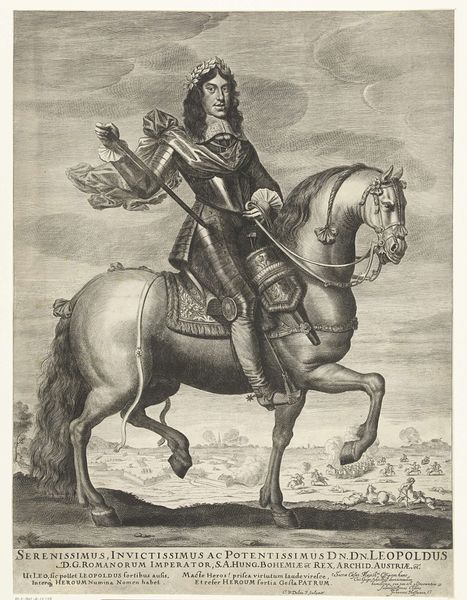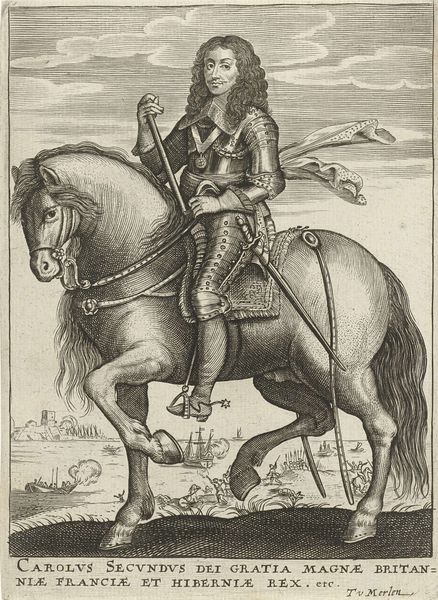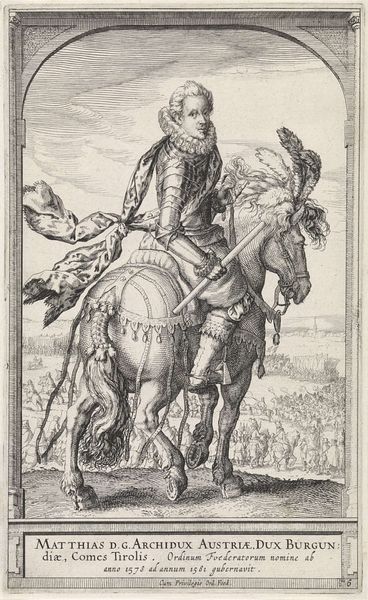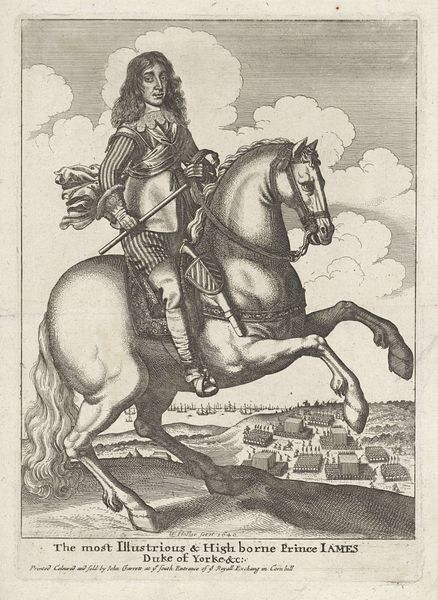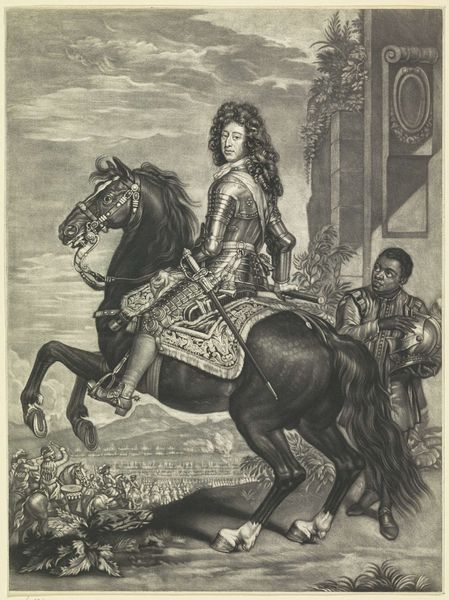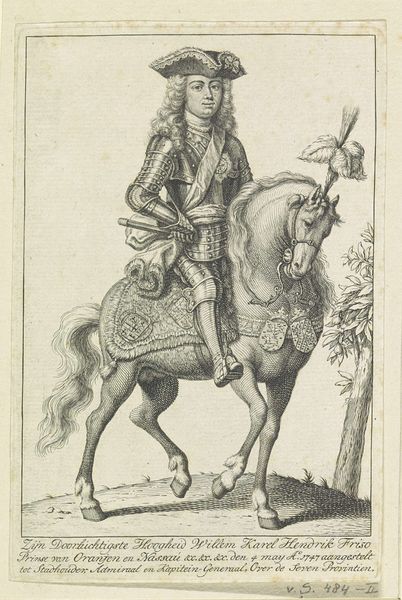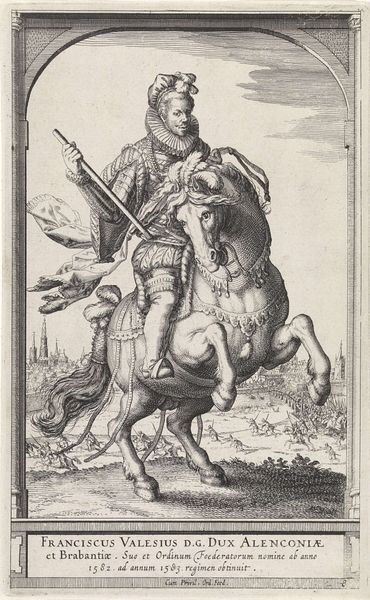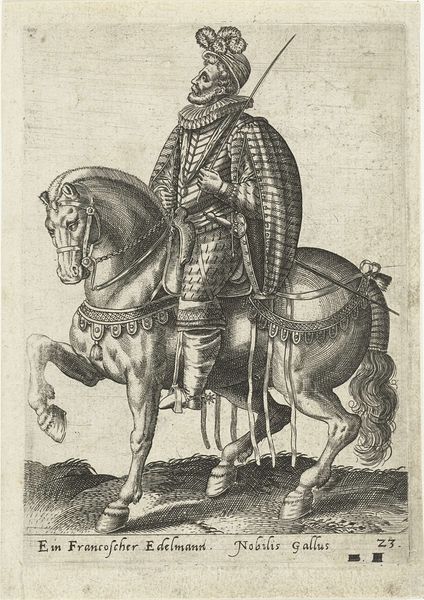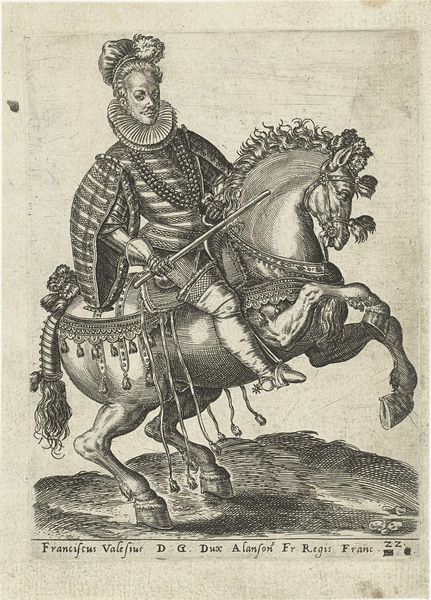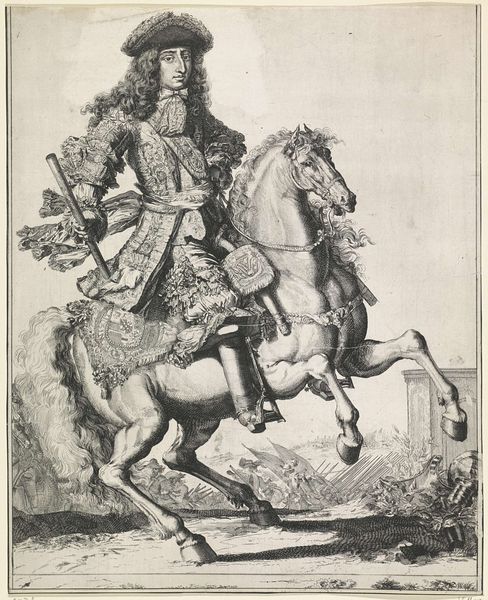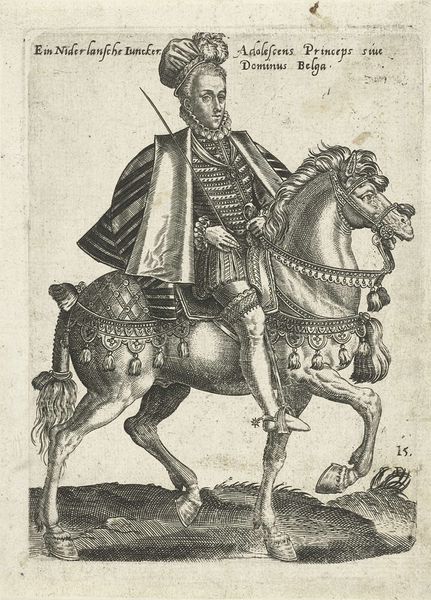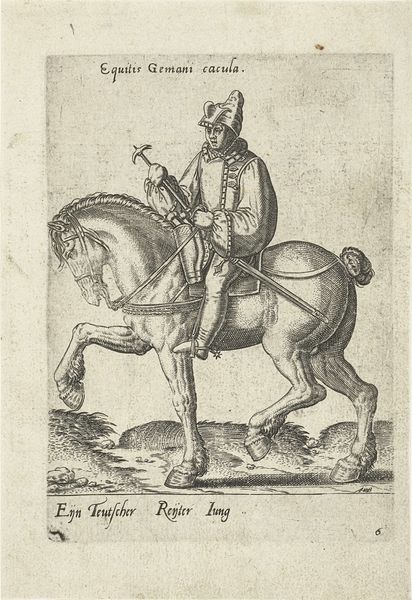
metal, engraving
#
portrait
#
baroque
#
metal
#
old engraving style
#
classical-realism
#
figuration
#
horse
#
line
#
history-painting
#
engraving
Dimensions: height 167 mm, width 123 mm
Copyright: Rijks Museum: Open Domain
Editor: This engraving, dating roughly from 1658 to 1672, presents a "Portret van Leopold I, keizer van Duitsland" by Theodor van (II) Merlen. The detailed linework captures Leopold in full regalia on horseback. I’m immediately struck by the idealized depiction of power – what layers of historical and cultural meaning do you see embedded within this image? Curator: The key to this piece is to acknowledge the narratives it’s deliberately constructing. We see Leopold presented as a divinely appointed ruler, symbolised by the cherub bearing his coat of arms. This imagery attempts to legitimise Habsburg power during a period of significant upheaval and conflict. The art overtly promotes the monarchy’s power and attempts to shape perceptions of its reign. Editor: It’s interesting to note that while presented heroically, he seems somewhat detached from the battlefield unfolding in the background. What does this contrast suggest? Curator: That tension is central. The foreground emphasizes Leopold’s supposedly inherent right to rule, somewhat masking the contested realities of 17th-century European politics. Ask yourself who the image is aimed at and how it attempts to create a unifying image of imperial power amid very fractured lands and identities. It prompts questions about propaganda, the creation of national identity and how conflict informs these projections of leadership. Editor: So, beyond being a portrait, it’s a carefully constructed argument about power, presented through symbolic imagery and its artistic style? Curator: Precisely. It's about understanding how power is performed, visualized, and ultimately, consumed by different audiences. The engraving reveals how Baroque aesthetics and symbolism are put into service of ideological programs. What do you think we can learn by situating the image amongst others of that period that portrayed different, even opposing leaders? Editor: Thinking about it that way, I realize there's much more to this than just a picture of a king on a horse. It’s a carefully staged scene meant to evoke certain feelings and legitimize Leopold’s rule, within the very specific historical conditions. Curator: Exactly, and by decoding those visual strategies, we understand more about not only Leopold’s reign, but also about the persuasive and often manipulative role of art in shaping history.
Comments
No comments
Be the first to comment and join the conversation on the ultimate creative platform.
